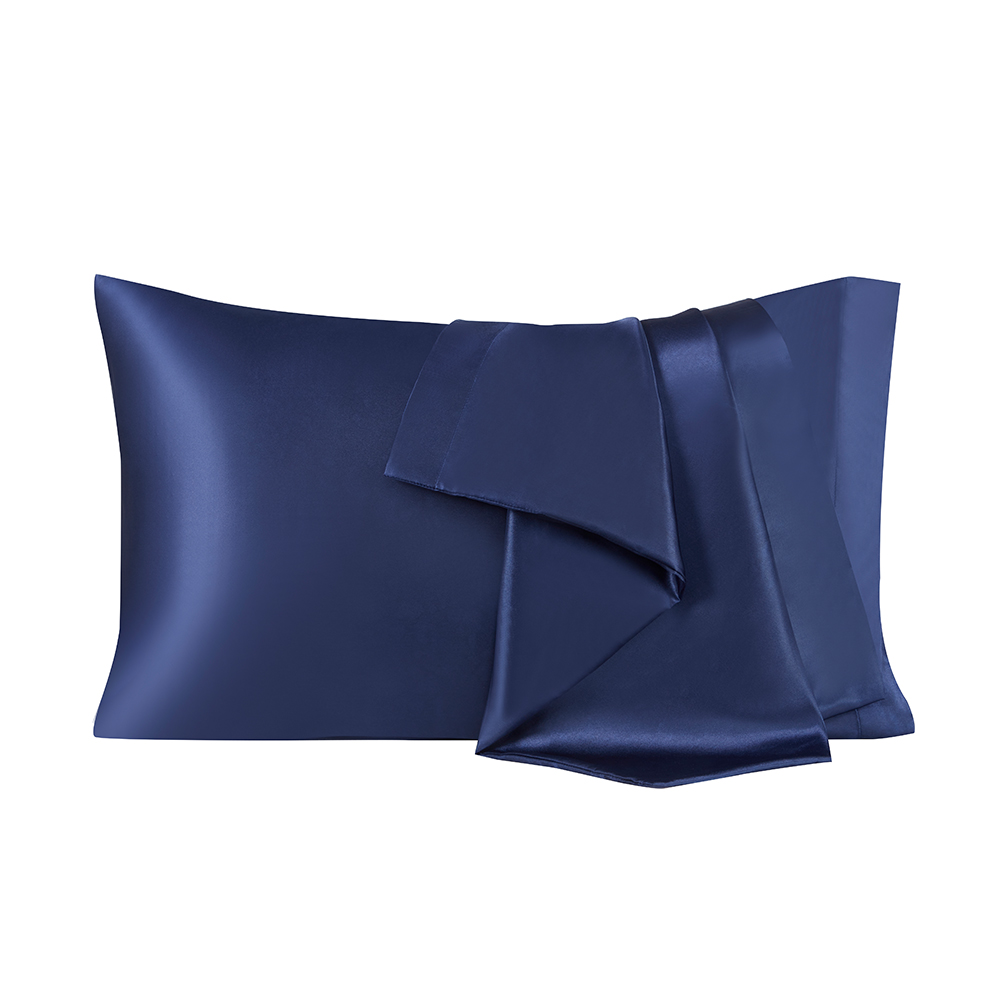How breathable and wicking are solid satin pillowcases?
Material characteristics of solid satin pillowcases
Solid satin pillowcases are usually made of silk, rayon or high-count and high-density polyester satin fabrics. This type of fabric has a smooth surface, a high weaving density, and a soft and delicate feel. The fiber structure of its material directly affects its breathability and moisture absorption. Natural fibers such as silk have good breathability and moisture absorption, while synthetic fibers such as polyester have relatively low moisture absorption but are generally more durable. Understanding the material of the fabric is the basis for evaluating its performance.
The importance of breathability and its influencing factors
Breathability refers to the ability of the fabric to allow air to pass through. For pillowcases, good breathability helps to dissipate the heat and moisture generated by the human head, avoid excessive stuffiness and sweating, and thus improve sleep comfort. Although satin fabrics are densely woven, the type and weaving of its fibers determine the effect of air circulation. The porosity of the fabric, the moisture absorption of the fiber, and the twist of the yarn all affect breathability.
The definition of moisture absorption and its impact on sleep experience
Moisture absorption refers to the ability of the fabric to absorb and release moisture. The head will produce a certain amount of moisture when sleeping. A pillowcase with good hygroscopicity can quickly absorb sweat, keep the skin dry, reduce the possibility of bacterial growth, and thus help improve sleep quality. Natural fibers such as mulberry silk have strong hygroscopicity, while synthetic fibers have relatively limited hygroscopicity, and special treatment may be required to achieve the desired effect.
Analysis of the breathability of solid satin pillowcases
Satin fabrics are characterized by a smooth surface and dense weave, which has certain restrictions on air circulation. Mulberry silk satin has certain micropores due to its natural protein fiber structure, which is conducive to air permeability and relatively good breathability. In contrast, although polyester satin is durable, its breathability is slightly weaker, especially in the case of dense weaving, air flow is more limited. If the pillowcase design is supplemented by special textile technology, this problem can be improved to a certain extent.
Analysis of the hygroscopic performance of solid satin pillowcases
The moisture absorption rate of silk solid satin pillowcases generally reaches about 10%-13%, with good moisture absorption capacity, which can effectively absorb moisture when the human body sweats and keep the pillow surface dry. The moisture absorption rate of synthetic fibers such as polyester is usually less than 1%, which means that sweat is difficult to be absorbed by the fiber and needs to be improved through other technical means or blending methods. High-quality solid satin pillowcases often make improvements in fabric ratio or post-processing process to improve moisture absorption performance.

Challenge of balancing breathability and moisture absorption performance
The design of solid satin pillowcases needs to seek a balance between breathability and moisture absorption performance in fabric density, fiber selection and weaving process. Although weaving too densely feels smooth, air is not easy to circulate, and it is easy to accumulate heat and moisture; weaving too loosely affects the texture and durability of the satin. Some manufacturers try to improve the practical performance of pillowcases while ensuring beauty and comfort by using natural fibers or functional coating technology.
The influence of the use environment on the breathability and moisture absorption performance of solid satin pillowcases
The temperature and humidity of the use environment directly affect the breathability and moisture absorption performance of the pillowcase. In a hot and humid environment, a solid satin pillowcase with good moisture absorption performance can effectively relieve the discomfort caused by moisture; in a dry environment, a pillowcase with good breathability can help maintain the natural moisture balance of the head skin. Users should also choose the appropriate pillowcase material based on their own sweating, seasonal changes and other factors.
The impact of cleaning and maintenance of solid satin pillowcases on breathability and moisture absorption performance
Proper cleaning and maintenance are the key to maintaining the breathability and moisture absorption performance of solid satin pillowcases. Excessive high temperature washing or the use of strong alkaline detergents may damage the fiber structure and reduce moisture absorption and breathability. It is recommended to use mild detergents, low temperature hand washing or machine washing gentle mode, and avoid frequent exposure to the sun. Proper maintenance can extend the life of the pillowcase and maintain its functionality.
Comparison table of breathability and moisture absorption performance of different solid satin pillowcases on the market
| Product Model | Fabric Material | Weave Density (TPI) | Moisture Absorption (%) | Breathability Rating (1-10) | Suitable Season |
|---|---|---|---|---|---|
| Product A | Mulberry Silk | 120 | 12.5 | 8 | Spring, Autumn, Summer |
| Product B | Polyester | 140 | 0.8 | 5 | All Seasons |
| Product C | Mulberry Silk Blend | 130 | 10.2 | 7 | Spring, Autumn |
| Product D | Polyester + Cotton | 125 | 2.5 | 6 | Spring, Autumn, Winter |

 previous post
previous post















